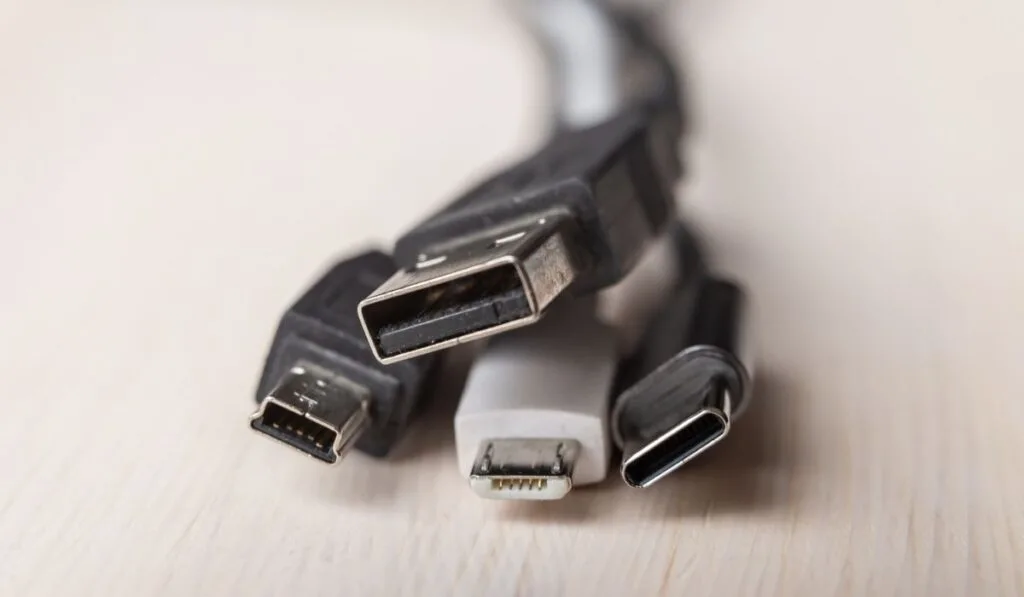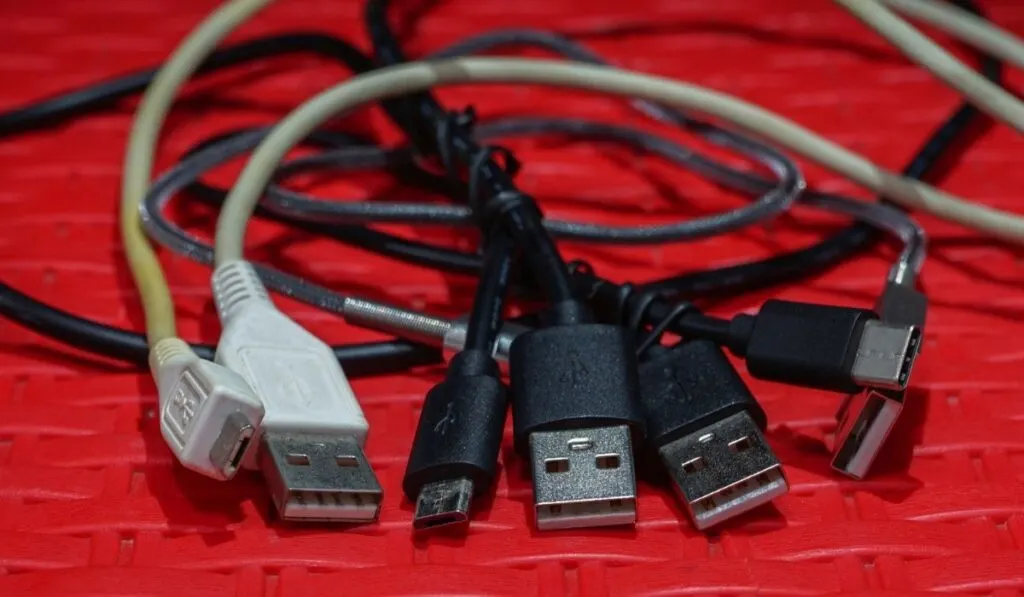It seems USB cables have become lifelines for all matters concerning devices; charging, data transfer, and power delivery, etc. So it’s a real obstacle when you discover that your USB cable has suddenly stopped working. It’s always best to have a cable that works well and is compatible with your devices, but like any manufactured item, your USB cable can stop working, and of course, this can be very inconvenient.
Usually, USB cables stop working when they’ve been physically damaged (internal wires get bent or broken). Cheaper cables are made of lower-quality materials and aren’t as reliable or safe (especially for charging). If your cable breaks, you can repair it, but it’s far easier to replace it.
So if you’re not sure what to do when this happens, keep on reading as we will discuss; reasons that cables can go bad, how to tell if a cable is working well, how to repair them, why cheap cables can not safe, and what to do if you can’t repair your damaged cable.
Do USB Cables Go Bad?

Absolutely. Any cable over time will lose effectiveness and get worn out. The standard USB has a general minimum lifetime of 1,500 cycles of inserting and removing. Micro-USB and USB-C have a rated minimum lifetime of 10,000 cycles.
It’s also possible that a USB port can get worn out over time as well. This is where troubleshooting any issue that you are experiencing can be a bit difficult.
Why Do USB Cables Go Bad?
Unless the cable was faulty straight out of the factory, there are several reasons why a cable can go bad suddenly or overtime:
- If you keep bending, folding, or pulling the cable then the wires inside can break. Once they break, the remaining wires will not be able to operate.
- Cheaper cables will last less time than more expensive ones as their assembly and materials are typically poorer. Cheaper cables are usually made from extremely thin wires that cannot withstand frequent bending at all.
- Sockets and plugs can also wear out. They can become loose, which results in bad or poor connections.
- Using your device while charging can cause damage; you can cause stress to the charging cable as it is having to deal with charging plus standard functions simultaneously.
How to Tell if a USB Cable is Working or Not
The easiest way to check whether a USB cable is working or not is to try charging a different device with it. This helps you determine if the core problem is the cable, or the device itself. Here are some troubleshooting steps that will help you identify if your cable isn’t working:
- When you start charging your device, and you find that the charging speed is too slow, then there is a high possibility that your cable that is not working. For example, if it normally takes one hour to charge your smartphone, but it’s now suddenly taking two.
- If you have connected both ends of the cable to the plug and device, and the device seems to lose the connection (or not detect the connection at all) then your cable is probably faulty.
- If the ends of your cable look dirty or rusty this will probably mean that your cable won’t work. Trying to clean it can be dangerous as you can easily break the internal pins, so it’s safer to just replace it. If you want to try and clean it- do it carefully!
- If your cable has several bends or clear wear and tear, it would be wise to not continue using it. Damaged cables can cause electric shock or minor explosions which could possibly damage your cable, device, or even yourself.
How to Repair USB Cables that Aren’t Working
When you realize that your cable is not working, your first thought may be how to repair it, especially if you are not in a position to buy another one. In most cases, it is safer and easier to just replace the cable. But if you’d like an alternative, here are some steps you can try:
- Take the broken end of the cable and clip it off cleanly (of course before you do this, you should have bought a pack of USB connector replacements).
- Strip off the outer insulation of the cable about two inches down and expose the inner wires.
- If the insulation fibres are still there, trim them back so that they do not get in the way.
- To expose the metal strands, you need to strip off the inner insulation about one inch from each inner wire (red, green, black, and white).
- Take the exposed metal of one color on each end and twist them together very tightly.
- Using electrical tape, you can cover the intertwined metal completely.
- Repeat the same method for the other three color wires, making sure no metal remains exposed.
- With electrical tape, bundle them all together and make sure they are completely covered.
- You need to put the wires through the connector replacement. Because connector replacements may have different layouts, you can check the datasheet or the store’s website to confirm which pin has to be connected to which wire.
- Using pliers, put the wires through the pins, and you have your repaired cable.
Now, this is a little bit of a tiresome process, so instead of fixing and recycling these cables, seriously consider just buying a new one. After all, they are so cheap and easily available that it’s probably not worth all the hassle.
Check out these cheap and easily available cables on Amazon:
Are Cheap USB Cables Safe?
While you have just seen some examples of the cheapest USB cables available, which are generally okay for a quick short-term replacement, it is not recommended for you to use them long-term as they can damage your device.
Cheap cables do not have the best quality components, and most of them don’t even adhere to basic safety requirements.
Using cables with poor quality components can lead to overheating, due to the wires being too small or too large for the current they’re required to carry. Exposure to dust, moist areas, sweat, and small debris could also cause them to short circuit, possibly leading to a fire.
Electrocution due to faulty components is another reason why cheap cables may not be 100% safe. Remember, a cable has thousands of volts inside; so, if it’s not properly insulated, it can cause electrocution.
Cheap cables can cause damage to your device or its battery. Low-quality wires are not usually properly shielded, so they can break very easily.
How to Know if Your USB Cable is Cheaply Made

You can easily know if you have bought a low-quality cable by looking at the following elements:
- They don’t show specifications between the high and low voltage components.
- They don’t have sufficient overload protection, and they’re not rated properly.
- The voltage levels vary wildly, and they have huge spikes while charging.
- If you notice a high noise or an inability to use your touchscreen while using the cable, then know your cable is definitely not good quality.
What to Do if You Can’t Fix a USB Cable
When you discover that you cannot fix your USB cable, two options are available. One is to check whether your warranty is still valid and return it to the manufacturer. You could alternatively just take it to a local store and see if they can repair it.
The second option is to buy another cable. A USB cable that has been repaired or recycled is still not as good as a new one, and there is still a chance that it will become faulty again even after it gets repaired. So it may be better to just invest a little in a new one.
